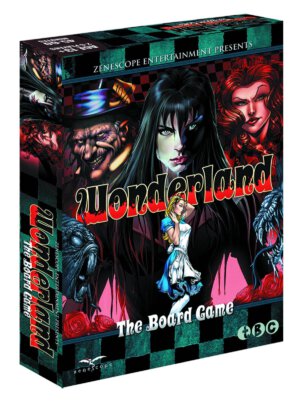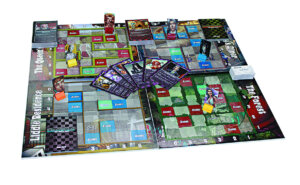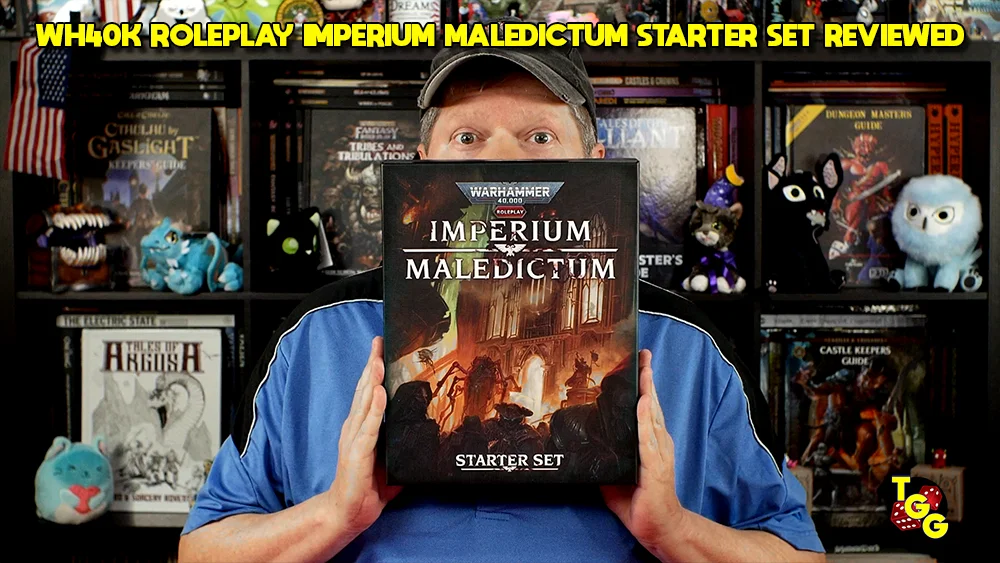Publisher: Zenescope Entertainment
Designer: Brian David-Marshall, Matthew Wang, Steve Sadin, Zeiland Powell, Matt Ferrando
Year: 2012
Players: 2 – 6
Ages: 15+
Playing Time: 45 Minutes
Retail Price: $39.99
Category: Roll and Move
Components:
- 2 Dice
- 4 Cheshire Tokens
- 40 Real World Event Cards
- 40 Wonderland Event Cards
- 50 Goal Cards
- 4 Double Sided Board Sections
- 36 Boss Cards
- 24 Item Cards
- 15 Madness Tokens
- 6 Goal Tokens
- 6 Player Stand-ups
- 6 Character Cards
From Zenescope:
Now you can experience Wonderland in a way no one has ever experienced before. The Wonderland series is one of the most popular comic book series Zenescope publishes and the company is proud to unveil the Wonderland Board Game. Experience a vibrant, twisted world, full of surprises, right in your living room! You can choose to play as one of your favorite characters including Calie, the Mad Hatter, Brandon, the Queen of Hearts, the White Knight and more!
Wonderland is the first board game from comic book publisher Zenescope. It is based on their Wonderland series of comics. The comics are full of incredibly sexy heroines and plenty of gore, and this is the reason that the board game recommended age is 15 and up. There isn’t much T&A in the game, but there are some disturbing pictures filled with blood and gore, so it isn’t appropriate for youngsters.
The artwork is straight from the comics and it is excellent. If you are a fan of the comics, you’ll see most of your favorite characters represented here. I haven’t read any of the Wonderland comics, but playing the game makes me want to read them.
I have no complaints about the components. They are all excellent, full color, and super glossy. There was a mistake in the copy that I received, and the Goal tokens were not included. Instead I received all Madness tokens. I understand this will be corrected, but it was no big deal. I just flipped some of the Madness tokens over and used their blank side.
The setting of the game is Wonderland and the Real World. Each of the four double sided boards has a Wonderland side and a Real World side. Players can flip these during the game by landing on a Warp space and successfully completing an event. This allows you to move between worlds, which is important for completing certain goals. The object of the game is to complete three goals and the first player to do so wins. There is a stack of goal cards and most deal with winning a certain combat or possessing certain items. Each character also has a specific goal, and this is where you would use the goal token to mark that you have completed your character goal.
There are two event card decks, one for each world. When you land on an event space you draw one of these cards depending upon which world you are in at the time. The events are of a pass/fail type, and involve rolling dice. They are completely luck based, although some are more difficult than others. Some of them are just goofy, like rolling to knock over an opponent’s pawn, or having a staring contest with another player. This will be fun or annoying according to your own tastes.
Item cards can be collected by winning certain events, or by defeating one of the bosses. If you defeat a boss, you actually get to look through the item deck and select the one you want, which comes in handy if you have a goal requiring a certain item. Items can effect combat or movement or various other effects.
The Boss cards are what you use when you land on one of the boss spaces on the board. There are multiple copies of each, so every player has a chance to defeat any boss. The cards list the requirements for beating that boss, and they typically involve combat, usually at a disadvantage to the player, so you’ll need to be lucky to win.
The rules are short, in black and white, and written in ALL CAPS, making them unnecessarily difficult to read. They are not very good, but the game isn’t that complicated so you can figure it out.
During set up, two of the boards are in the real world and two are on the Wonderland side. All players start on the Little Residence board and their placement on the board is determined by a die roll. The spaces on each board are numbered from one to six across the top and down the side in green and red, like a grid. You roll the green and red dice and place your character stand-up on the corresponding space. This also occurs if a board flips and you are on it. Just roll the dice and place your character on the corresponding space on the new board. A single Cheshire Cat token is placed on each board using the same method.
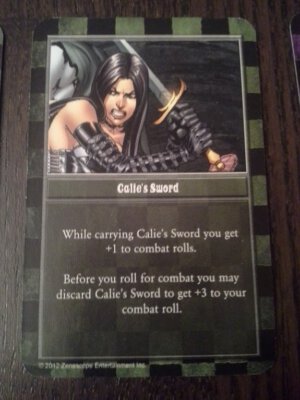
You are choosing your direction, thus you are landing on the spaces that you want to land on. The encounters you have are usually by your choice, unless another player decides to attack you. Some of the events will give you bonus movement which can lead you to facing a second or even third event on your turn. If you complete a goal, you must reveal it during your turn to get credit.
Combat involves rolling the dice. Roll both dice and compare totals. If facing a boss, another player rolls for the boss attack. Players can then use items to modify their rolls. The player with the highest total wins. In a tie, the players fight again. In a boss fight you win on a tie. It’s pretty simple.
The Cheshire cat tokens act like bosses. If you defeat one you get to add that token to your character card. It is required for certain goal cards. The final aspect of the game are the Madness tokens. At times you will end up with one or more madness tokens, usually from failing an event. These can hurt you or help you depending on the character you are playing and the goals that you have. Another effect of the madness tokens is that when you have one, you can no longer use the special ability listed on your character card. Instead you use the ability listed under the madness section on the card, and again these can be good or bad. In some cases you will want to get madness tokens, and in others you will want to get rid of them. Luckily this can be done.
That’s it. The game continues until someone completes three goals and then they win. I do have mixed feelings about the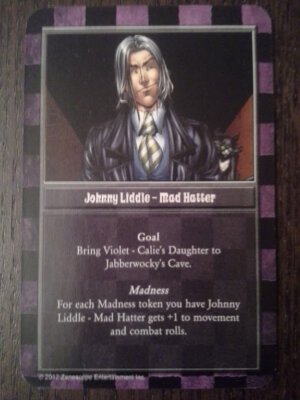
What this game needs is some character statistics that you can modify during play and use to roll for the different events. Rather than every card saying a version of “Roll a Die, On a 1,2 or 3 you win the event” you could have events that say “You are attacked by Tweedle Dee. Roll your strength or less to win the event.” Which is much more in theme and let’s you feel like it is less random. Add some more event cards, and split each deck into four separate decks, one for each location on each world. This would make them more specific to the board that you are on. As it is, the locations are just names. Some flavor text on the cards would help too.
Overall Wonderland isn’t a bad game, but it could be better. Fans of the comics will like the game, for others it will depend upon your own personal tastes. I found the amount of randomness to be a bit much for me.
- A Dungeon Delve for Kids?: A Review of Dungeon! - Oct 24, 2022
- Better, Stronger, Faster | Descent: Journeys in the Dark Second Edition Reviewed - Oct 23, 2022
- Your Planet is Doomed!: Invasion from Outer Space Reviewed - Oct 22, 2022


